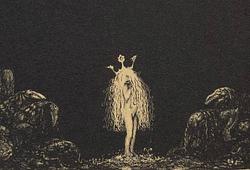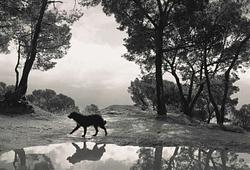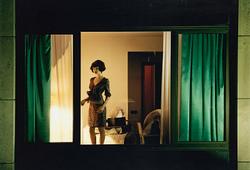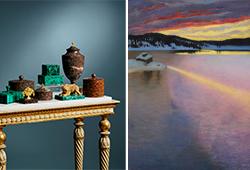Helene Schjerfbeck
Helene Schjerfbeck, "Mother"
Signed H. Schjerfbeck and partially scraped away 'Schjerf' above to the right. Executed in 1903. Watercolour, gouache, and charcoal on paper, 30 x 23.5 cm
Wear due to age and use.
Provenance
Collection of Thorvald Lillja; through inheritance within the same family.
Exhibitions
"Helene Schjerfbeck Memorial Exhibition", Helsinki Art House, 10.07.-24.08.1980.
"Helene Schjerfbeck", Ateneum Art Museum, 2.2.-5.4. 1992, no.168.
"Helene Schjerfbeck", The Phillips Collection, Washington D.C., 1992,
The National Academy of Design, New York 1992-1993, no.168.
Literature
H.Ahtela, "Helena Schjerfbeck", Helsinki, 1953, no.316.
"Helene Schjerfbeck", ed. Leena Ahtola-Moorhouse, Ateneum, 1992, no 168, illustrated on p.147.
"Helene Schjerfbeck-150 years", ed. Leena Ahtola-Moorhouse, Ateneum art museum, 2012, no 254, illustrated on p.162.
More information
When Helene Schjerfbeck moved from Helsinki to Hyvinkää in 1902, her mother became a natural and easily accessible model, as they shared a room and kitchen in a rented apartment. The oil painting "At Home (Mother Sewing)" from 1903, owned by the Turku Art Museum, is the largest of these early interpretations of Olga, her mother, and is not far behind the oil painting "My Mother (Mother Reading)" from 1902, owned by the Moderna Museet in Stockholm. Both paintings focus on the peaceful and warm home atmosphere created by the mother.
Around this time, Helene also began to simplify and modernize her expression, especially in her lighter works. One of the gems from 1903 is "Mother", which is now for sale. Using simple means and choices, the artist creates an almost sacred atmosphere in the work. The background of the model is colored in an icon-like golden yellow tone, while the clothing is correspondingly very dark. The focus of the painting is on the face and head, with the face almost reflecting the color of the background. The features, including the eyeglasses, are deliberately highlighted with sharp, evenly thick lines, and the soft white hair creates an almost halo-like effect around the mother's focused expression. The space is opened up by a gray gradient corner that stands out from the black lower part. The atmosphere is devout, but the sharp lines also bring a suitable edge of everyday life to it.
Leena Ahtola-Moorhouse














































